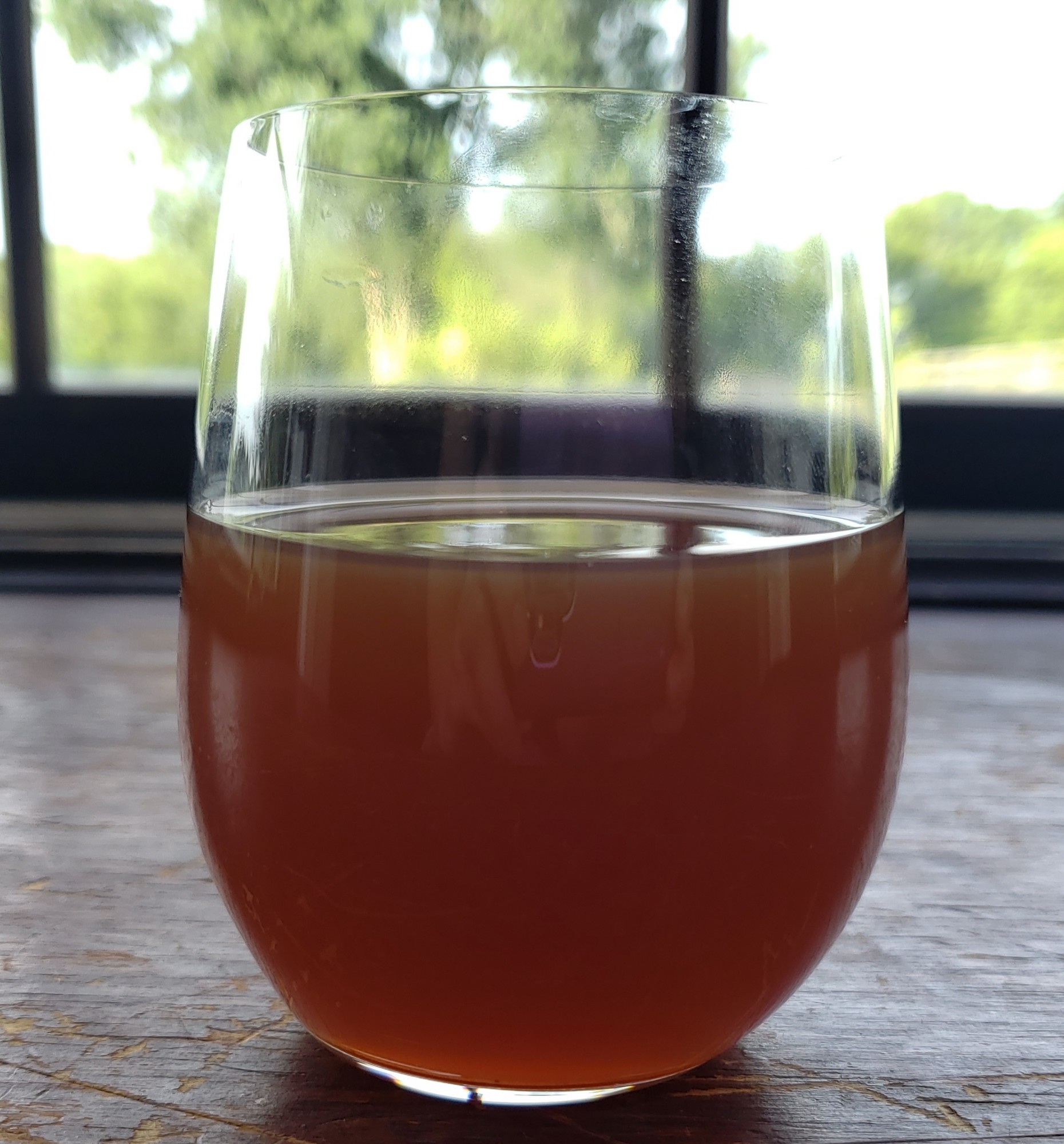
Ah, Tepache…so sultry, so tropical, so refreshing. It’s a wild-fermented beverage made from the “waste” parts of a pineapple – the rind and cores – and astonishingly enjoyable. We’re big Tepache fans, so, naturally, making a Tepache wine seemed the next logical step.
This batch was truly an experimental: I wasn’t really even sure it would be drinkable wine, but I had to try. In my haste to create, however, I took rather skimpy notes and am now discovering some gaps in my recipe, making exact replication difficult. Process improvement opportunity: take more timely, detailed notes when making an experimental wine. Check.
The wine started out very much like Pineapple Peel wine, with Tepache twists: I added super-aromatic Saigon Cinnamon and ground cloves, as well as 1/4 cup of dark molasses.
And the wine? It’s been described as looking like cola, and is pretty opaque – likely due to the molasses. It looks a lot like regular Tepache. It has more viscosity than other wines I’ve made; again, probably due to the molasses. The flavor? It tastes of cinnamon and clove, hints of pineapple, and prominent molasses. While definitely reminiscent of Tepache, there’s no mistaking that it’s wine. In researching the use of molasses in wine, I found a description that likens the flavor to that of spiced rum, and I think there’s some of that flavor profile in the finished Tepache wine, too.
I’ve bottled it and am looking forward to finding out how aging affects the flavor – perhaps time will mellow the molasses a bit. In retrospect, I think just a couple of tablespoons of the molasses would probably have sufficed and let more of the pineapple come through; alternately, using a less-refined sugar would likely work well and not overwhelm the more subtle flavors. Stay tuned for v2.0!
So many uses for pineapple rinds and cores: Tepache, Pineapple Peel Wine, Tepache Wine…see pineapple in a whole new light!
